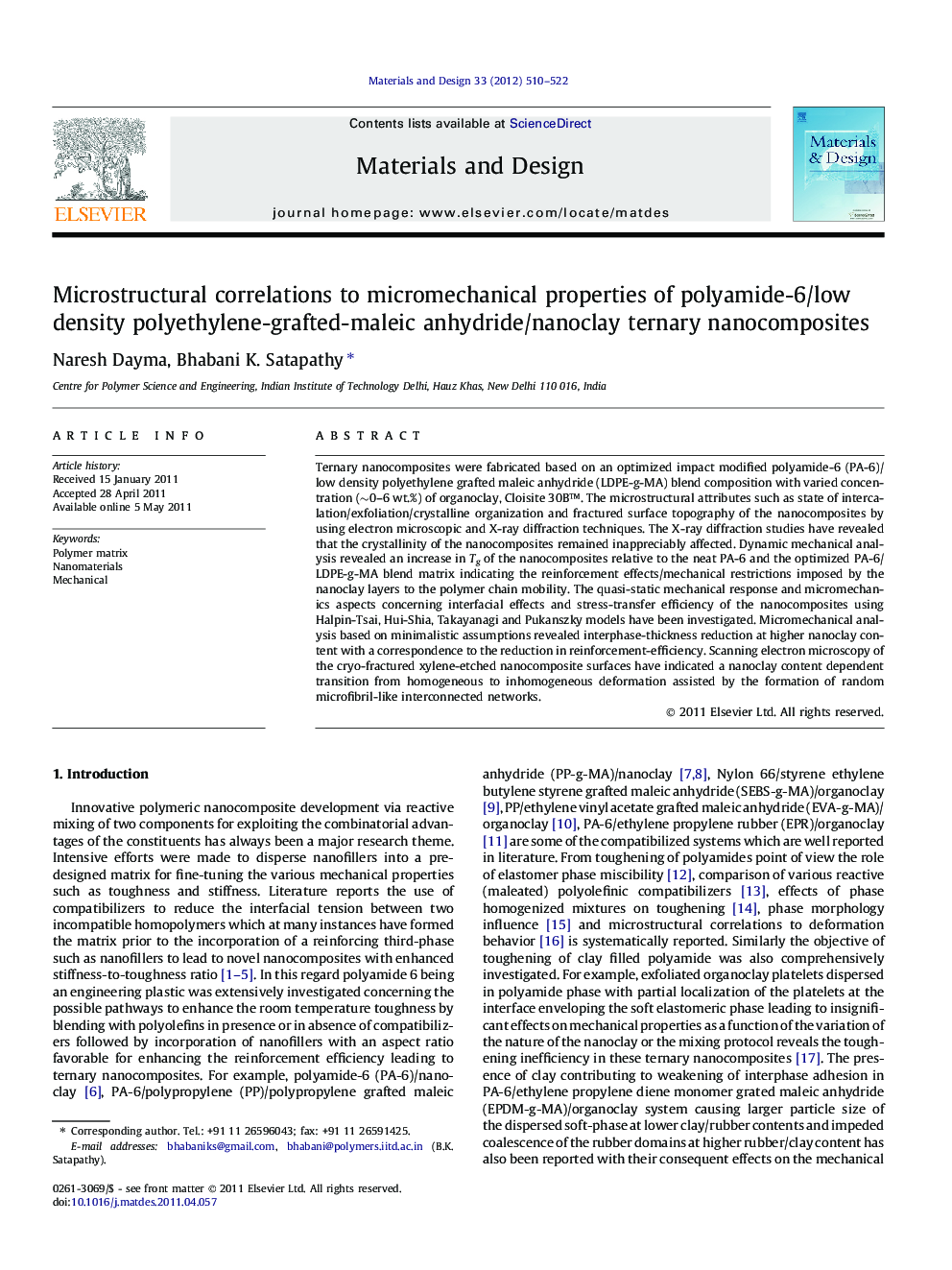| Article ID | Journal | Published Year | Pages | File Type |
|---|---|---|---|---|
| 831174 | Materials & Design (1980-2015) | 2012 | 13 Pages |
Ternary nanocomposites were fabricated based on an optimized impact modified polyamide-6 (PA-6)/low density polyethylene grafted maleic anhydride (LDPE-g-MA) blend composition with varied concentration (∼0–6 wt.%) of organoclay, Cloisite 30B™. The microstructural attributes such as state of intercalation/exfoliation/crystalline organization and fractured surface topography of the nanocomposites by using electron microscopic and X-ray diffraction techniques. The X-ray diffraction studies have revealed that the crystallinity of the nanocomposites remained inappreciably affected. Dynamic mechanical analysis revealed an increase in Tg of the nanocomposites relative to the neat PA-6 and the optimized PA-6/LDPE-g-MA blend matrix indicating the reinforcement effects/mechanical restrictions imposed by the nanoclay layers to the polymer chain mobility. The quasi-static mechanical response and micromechanics aspects concerning interfacial effects and stress-transfer efficiency of the nanocomposites using Halpin-Tsai, Hui-Shia, Takayanagi and Pukanszky models have been investigated. Micromechanical analysis based on minimalistic assumptions revealed interphase-thickness reduction at higher nanoclay content with a correspondence to the reduction in reinforcement-efficiency. Scanning electron microscopy of the cryo-fractured xylene-etched nanocomposite surfaces have indicated a nanoclay content dependent transition from homogeneous to inhomogeneous deformation assisted by the formation of random microfibril-like interconnected networks.
Graphical abstractSchematic showing the tripartite polar interactions between the polar moieties of PA-6, LDPE-g-MA and Cloisite 30B.Figure optionsDownload full-size imageDownload as PowerPoint slideHighlights► Conceptual feasibility of material design via tripartite polar interaction pathways. ► Nanoclay enabled the retention of the toughness enhancement i.e. above ∼200%. ► Intercalated flocculated morphology with unaffected crystallinity in nanocomposites. ► Micromechanical predictions indicate proximity to Takayanagi and Hui-Shia models. ► Nanoclay caused decrease in interphase thickness and impeded segmental mobility.
